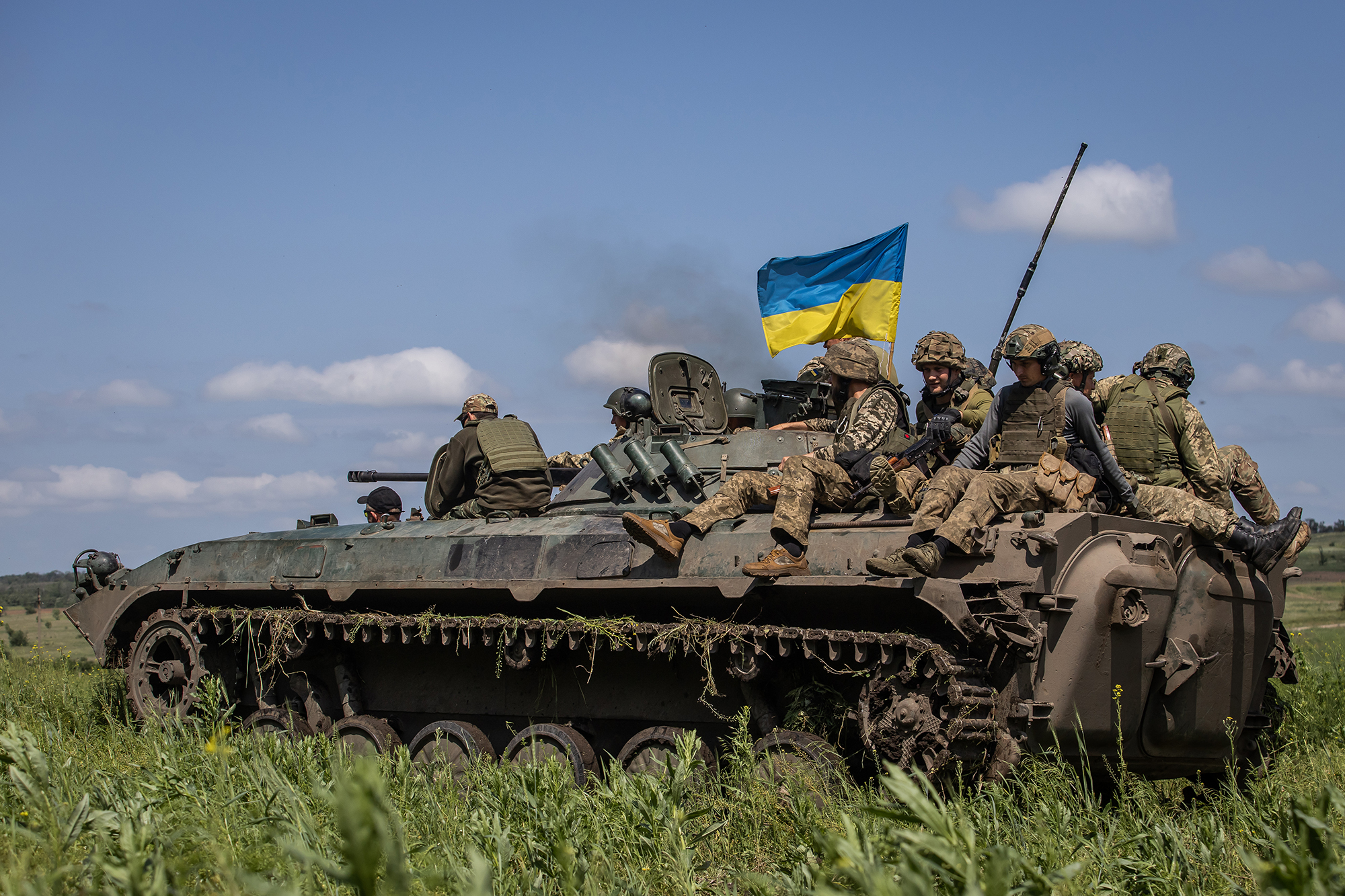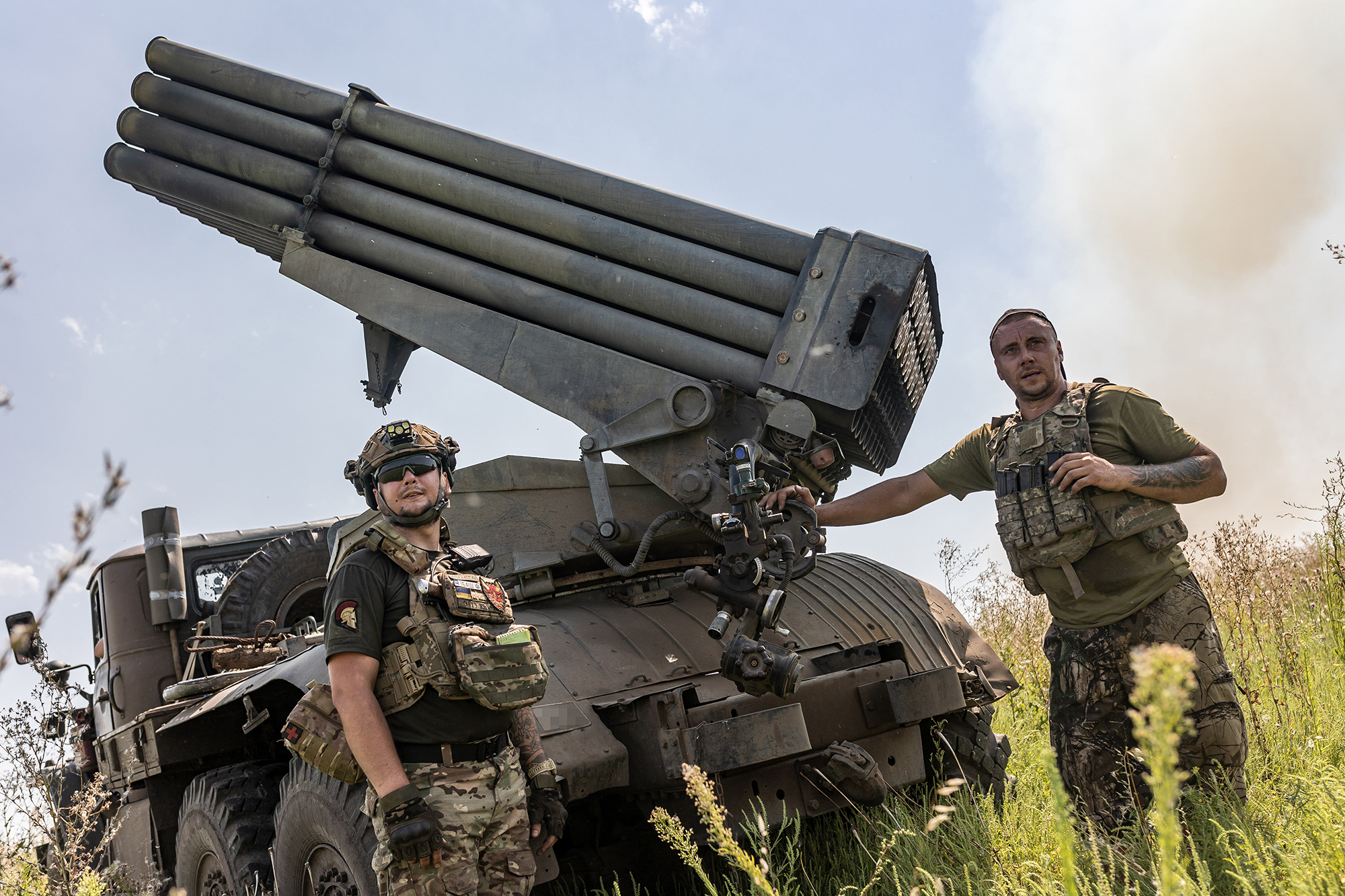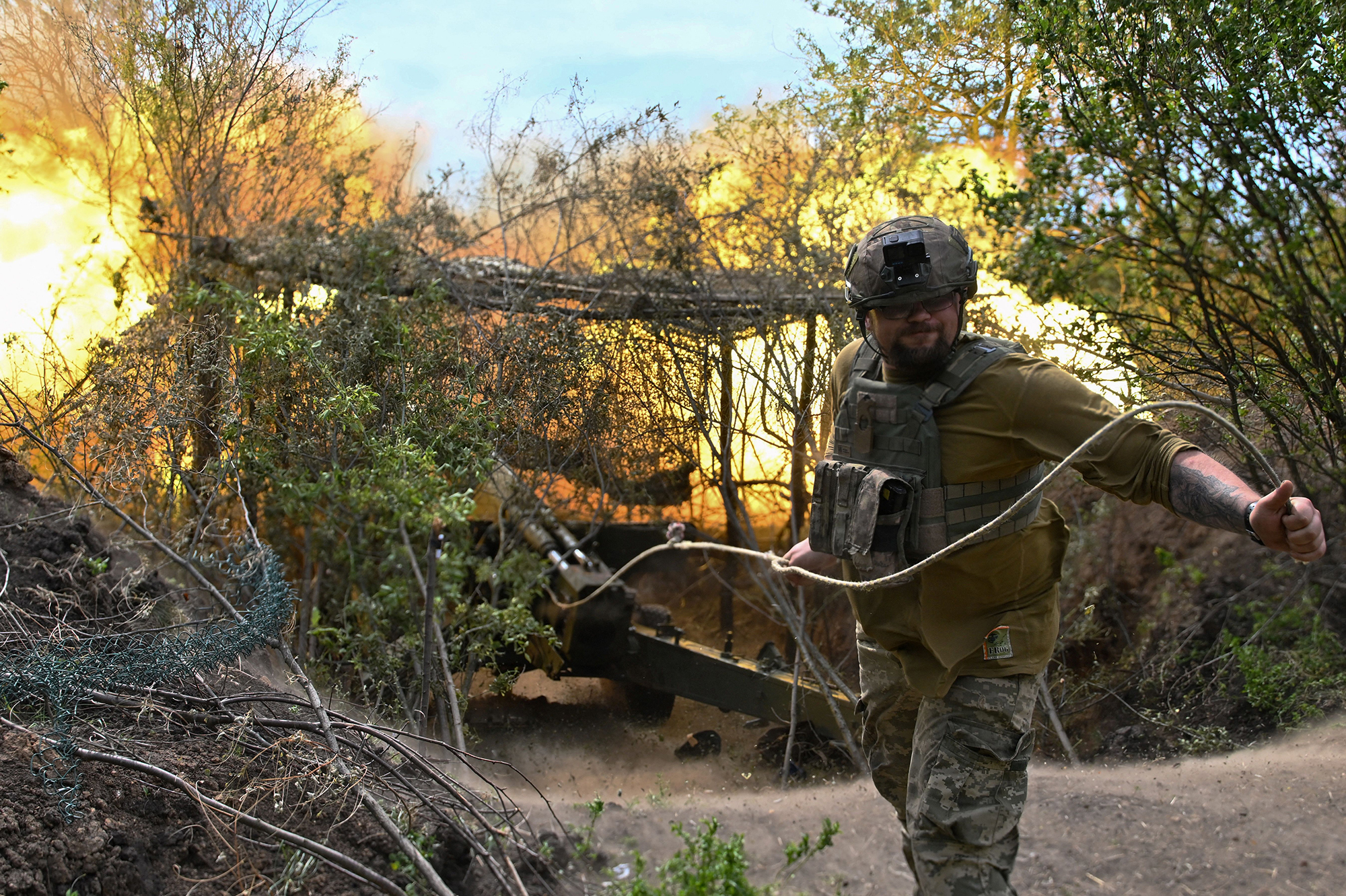Why the West doubts success of the Ukrainian summer offensive and what to expect on the front
 The Ukrainian forces in the south have approached the main Russian defensive line (photo: GettyImages)
The Ukrainian forces in the south have approached the main Russian defensive line (photo: GettyImages)
The Ukrainian army continues its advance in the South. In two and a half months of fighting, the Defense Forces have managed to liberate 11 populated areas. Foreign media, citing Western officials, are increasingly casting doubt on the success of the Ukrainian Armed Forces' progress. What complicates the rapid liberation of territories in the South and what can be expected from our offensive - details in the material by RBK-Ukraine below.
The Ukrainian offensive operation has been ongoing for over two months now, yielding limited success so far. During this time, the defense forces managed to liberate 11 populated areas. The current gains are far from aligning with public expectations and how Western media depicted the upcoming battle. Instead of a swift breakthrough, Ukrainian soldiers are forced into bloody battles for individual rural streets and trenches.
There are both objective and subjective reasons for that. However, drawing definite conclusions about the results of this campaign is premature. What can be said with certainty is, firstly, that it will undoubtedly influence the course of the war. Secondly, the liberation of Ukrainian territories will not be completed with this operation alone. Thirdly, the most challenging and intense phase of the offensive lies ahead, as the battle in the South has not yet reached its climax.
Battles intensification
At the beginning of June, Ukrainian forces attempted to advance on three adjacent fronts in the South: from Kamianske-Stepove, from Orikhove-Mala Tokmachka, and from Velyka Novosilka. However, these directions of attack were well anticipated by the Russians, and they had at least seven months to prepare for them. The Ukrainian army encountered a multi-layered enemy defense that had to be pierced meter by meter.
Since the end of July, the offensive actions in the South seem to have picked up pace. The New York Times reported, citing U.S. officials, that the Ukrainian Armed Forces have supposedly chosen the main thrust direction to be Tokmak-Melitopol. Whether this is accurate or not is currently hard to say.
Indeed, in the Melitopol direction, specifically in the areas of Robotyne, Novoprokopivka, and Verbove, Ukrainian forces have come closest to the main line of Russian defense. According to unofficial information, the occupiers no longer control Robotyne, but they are preparing for a fierce defense of Verbove by deploying their reserves to that area.
The Ukrainian army is also gradually introducing reinforcements. Forbes reported that the 82nd Airborne Brigade, equipped with BMP Marder, APC Stryker, and Challenger-2 tanks, which have not been seen on the front lines before, has entered the battle in this direction. Overall, according to unofficial information, approximately half of the 12 new brigades prepared for the offensive have not yet been deployed into battle.
Another direction where the situation for Ukrainian forces is developing with cautious optimism is the border between Zaporizhzhia and Donetsk regions. Following the recent liberation of Urozhaine, the village of Zavitne Bazhannia is next, followed by Staromlynivka, a key enemy defense node before the main line of defense in this part of the front. Since the beginning of the offensive operation in the South, Ukrainian troops have managed to liberate the largest area of territory in this direction.

Ukrainian forces have made the most progress in the Berdiansk direction (photo: GettyImages)
Furthermore, Ukrainian forces have recently conducted successful attacks in another area - to the south of Vuhledar. Additionally, there is knowledge of at least three small lodgments on the left bank of the Kherson region, which should also be considered in the context of the offensive operation in the South. It is unlikely that a crossing of the Dnipro River will be the main effort of the Ukrainian army - such an operation requires too many resources. However, it may play a role as Ukrainian forces advance toward the Sea of Azov.
In the East, Ukrainian forces continue their offensive actions on the flanks of Bakhmut. Essentially, this city lacks strategic military value. Yes, it is an area of convergence for many roads. But losing this city, for which Moscow has committed tens of thousands of soldiers, would be more of a symbolic failure and a significant setback. It also pushes the Kremlin far back in its attempt to reach the administrative border of the Donetsk region. The enemy constantly reinforces this area to maintain its position.
While the Ukrainian command prepared the operation in the South, Russian staff decided to launch their own offensive in the Northeast. Presumably, with this activation, the enemy has one of several objectives: either to draw our reserves that were being prepared for the Pryazovia region or to try to straighten the front line along the Oskol River.
Currently, the enemy's offensive actions in this area are focused in two adjacent directions - Kupiansk and Borovske. Attempting to advance from the area of Svatove, the occupiers aimed to cut through our formation defending on the left bank of the Oskol River, simultaneously squeezing it from the northeast in the Kupiansk area. The Russian advance on the first stretch was halted, although they continue to make attempts to attack. On the second stretch, intense fighting continues in the area of Synkivka.
Despite the enemy amassing at least 50,000 troops in this area of the front, with roughly the same number in the Lyman direction, their chances appear extremely unclear. Firstly, this is not the most convenient terrain for an offensive, and secondly, the Ukrainian army is prepared to resist. Ultimately, one can make a cautious assumption that after Bakhmut, and in the near future, the Russians may simply not be capable of conducting large-scale offensive actions. However, unfortunately, they are still capable of putting up an effective defense.
Is the advance really not going well?
The pace and scale of the Ukrainian advance in the South are increasingly described with pessimism in Western media. The foreign press, citing assessments from American officials, says that brigades trained abroad are advancing either not effectively or not quickly enough. It's worth noting that these messages are also being further inspired and amplified by Russian information warfare. In reality, our advance is going as successfully and quickly as it could under the current conditions and resources available. All other assessments are purely the result of inflated expectations.
The initial attempts to advance in June, where our brigades tried to conduct battles using a joint military approach, did encounter some difficulties. The essence of this tactic lies in the synchronized work of different types of troops - infantry, artillery, ground, and air forces. Military analysts FranStefan Gady and Michael Coffman, in a piece for The Economist, provided an example: while one group of troops carries out a brief artillery barrage on enemy positions, engineers simultaneously clear the way, and soldiers advance under the cover of fire.
However, this method, which our brigades learned in the West, did not provide the expected advantage over the enemy - not because one tactic is worse or better, but because a few weeks are too short to master it. Gady and Coffman noted that Ukrainians are capable of conducting joint military assault operations at the platoon level, but not at the company or battalion level.

Ukrainian troops have changed their tactics (Photo: Getty Images)
Ukrainian troops have slightly changed their tactics in the second stage of the advance. Instead of moving under enemy fire on mined fields, they clear the area with artillery fire. In addition, small groups often advance at night. Enemy firing positions are destroyed, and their forces are exhausted by artillery to the point where Russian military forums have begun to complain that they cannot withstand Ukrainian counter-battery fire.
Western officials believe (as recently reported by The Washington Post, among others) that this reduces casualties on the battlefield. However, it also results in slow and very limited progress. But if the choice for the Ukrainian command is between speeding up the liberation of territories or preserving as many of our soldiers as possible, the choice is clear.
This is just the tip of all the obstacles. The delay in the West in delivering the necessary weaponry gave the Russians time to establish layered defensive positions in the South, stretching for hundreds of kilometers. The movement of troops is further complicated by numerous minefields, which the enemy simultaneously targets with fire from helicopters, drones, and artillery. The long-awaited Western armored vehicles helped to save the lives of personnel after strikes and explosions, but often the crews had to either turn back or abandon damaged vehicles and retreat.
During the first phase of the advance, demining vehicles became the primary target for enemy attacks. Even without that, there were not enough of them. Moreover, sometimes areas cleared of mines by Ukrainians were re-mined by the Russians using drones or artillery before Ukrainian units could advance.
Another problem is the lack of short-range air defense systems and, more importantly, aviation. Only after the start of the advance did our partners decide to begin training our pilots on modern fighter jets. It can be expected that the first squadrons of these aircraft may arrive in Ukraine by the new year. However, the presence of such aviation two months ago could have significantly aided the advance by repelling enemy aircraft and destroying enemy defensive positions.
Factors of uncertainty
According to the coordinator of the Information Resistance group, Kostiantyn Mashovets, the occupiers have deployed a hundred-thousand-strong military force in the Azov region. This may seem like an unbeatable force, which is further bolstered by a multi-layered defense system and air superiority. However, even such a force has its vulnerabilities, and Ukrainian soldiers are currently working on exploiting them.
For now, it appears that the window of opportunity for this year's campaign will remain open until around mid-October. Beyond that, weather conditions could slow down offensive actions. Whether Ukrainian forces can achieve their goal of cutting off a land corridor to Crimea in two months remains an open question. Western media, citing American officials, cast doubt on this goal. However, objectively, the answer could go either way.
Given the current pace of advancement by our brigades, a hypothetical advance toward Tokmak, Vasylivka, or Volnovakha in the South, and the potential recapture of Bakhmut (or, more accurately, the ruins of Bakhmut) in the East, seems quite realistic. However, if Ukrainian forces manage to hit a weak spot in the enemy's defenses and their defense starts to crumble, the advance could be more substantial.

Ukrainian brigades still have a chance for success in the south despite Western media skepticism (Photo: GettyImages)
In one of the previous materials, RBC-Ukraine already explained that the course of the war will depend on the summer-fall campaign. Depending on the achieved successes, it can develop according to one of several scenarios. Currently, there are grounds to talk about the third - the middle scenario, in which our army manages to implement only part of the outlined offensive goals.
One of the threats of this scenario, which American media also emphasize, is that if Ukraine's successes are quite limited, we will hear more voices in the West advocating for the cessation of military support and negotiations with Moscow. Some Republicans are already refusing to approve Joe Biden's request for an additional $20.6 billion in aid. However, they are still in the minority. Informed sources in political and military circles say that the suspension of Western military support is not expected. However, some of them clarify, "at least until the end of winter."
The planning and forecasting horizon is very short. What will happen next year will depend at least on two significant factors. The first is a new wave of mobilization in Russia. It is still unclear what decisions will be made in the Kremlin, considering that next year there will be another presidential election. Yes, Putin cares little about human lives, but, whatever the case, he is still concerned about popular love and approval.
The other important factor is the U.S. presidential elections, during which Biden plans to compete for a second term. The course of the war will be on the campaign agenda one way or another, as billions of dollars of American taxpayers' money have already been invested in the Ukrainian army. The question here is what strategy the White House will choose, distancing itself from Donald Trump's counterattack.
In reality, Washington has only three options. Either try to end the war before the elections with any outcome, passing it off as a victory. Or continue to provide measured assistance so that it can be reported that with U.S. support, Ukrainian soldiers are gradually liberating their territories during the campaign. Or in the spring or summer, push for the provision of all the necessary equipment so that Ukraine can enter Donetsk, Luhansk, and liberate Crimea directly before the American elections, declaring a decisive victory over Russia.

